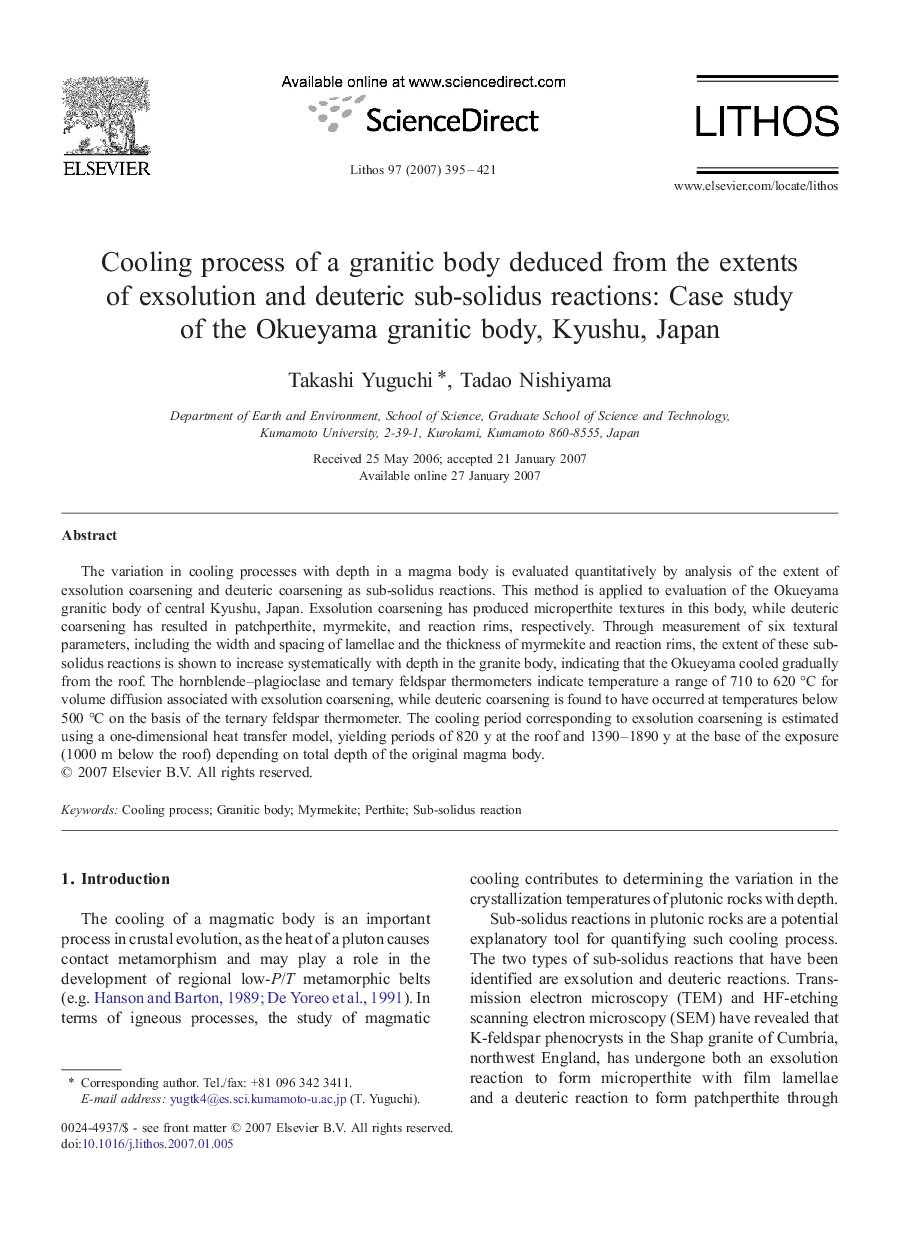| Article ID | Journal | Published Year | Pages | File Type |
|---|---|---|---|---|
| 4717735 | Lithos | 2007 | 27 Pages |
The variation in cooling processes with depth in a magma body is evaluated quantitatively by analysis of the extent of exsolution coarsening and deuteric coarsening as sub-solidus reactions. This method is applied to evaluation of the Okueyama granitic body of central Kyushu, Japan. Exsolution coarsening has produced microperthite textures in this body, while deuteric coarsening has resulted in patchperthite, myrmekite, and reaction rims, respectively. Through measurement of six textural parameters, including the width and spacing of lamellae and the thickness of myrmekite and reaction rims, the extent of these sub-solidus reactions is shown to increase systematically with depth in the granite body, indicating that the Okueyama cooled gradually from the roof. The hornblende–plagioclase and ternary feldspar thermometers indicate temperature a range of 710 to 620 °C for volume diffusion associated with exsolution coarsening, while deuteric coarsening is found to have occurred at temperatures below 500 °C on the basis of the ternary feldspar thermometer. The cooling period corresponding to exsolution coarsening is estimated using a one-dimensional heat transfer model, yielding periods of 820 y at the roof and 1390–1890 y at the base of the exposure (1000 m below the roof) depending on total depth of the original magma body.
